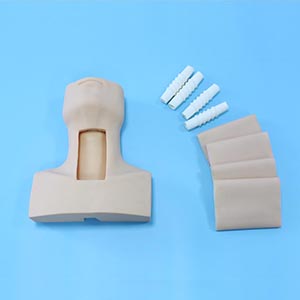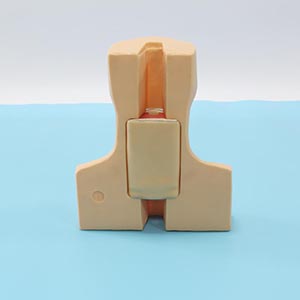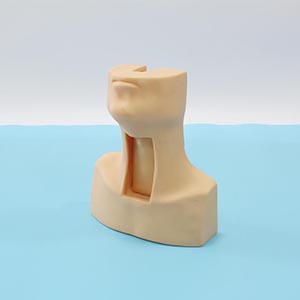Homepageпјҡ NEWS >> Is the demand for tracheotomy training models growing?
In the modern medical training system, simulation training model is gradually becoming a key tool to improve the practical ability of medical staff. Among them, tracheotomy training model has been widely concerned by the medical education field because of its application in emergency medicine, anesthesiology and intensive care. So, is the market demand for this kind of training model growing? This paper will be analyzed from the perspective of market demand, technological progress and industry development.

1. Growing demand for medical training
With the continuous progress of the global medical industry, the standardization and standardization of clinical practice training has become an important goal of medical education. Tracheotomy is an important technique of emergency airway management, and its accuracy and proficiency directly affect the survival rate of patients. It is difficult for traditional teaching methods to provide enough practical operation opportunities, but the highly simulated training model makes up for this shortage, so that medical staff can practice safely in non-clinical environments, improve operational proficiency and emergency response ability.
According to a report by market research institute , The global medical simulation training market is expanding at a compound growth rate of about 10% per year , and it is expected that the global medical simulation equipment market will exceed 10 billion US dollars in the next five years. Among them, respiratory management training equipment, including tracheotomy training models, has become an important segment of market growth.

2. Technology advances promote training model upgrades
In recent years, the technical level of medical teaching equipment continues to improve, especially in the most advanced simulation materials, sensing technology and real-time feedback system, making tracheotomy training model more clinically applicable. For example, some high-end models are equipped with a haptic feedback system , which simulates real tissue resistance and helps students feel the incision process more intuitively.
These technological advances have not only improved the training effect, but also stimulated the procurement demand of medical institutions for new training equipment, and promoted the continuous expansion of the market size.

3. Industry development and policy support
Governments and medical institutions are increasing their investment in medical education and training, especially in the field of emergency and critical care , with greater emphasis on practical skills. For example, the American Medical Association (AMA) and the European Recovery Committee (ERC) both recommend that medical staff must receive adequate simulation training before actual operation to reduce the occurrence of medical errors. In China, the implementation of the Standardized Training System for Resident Doctors in recent years has also increased the procurement of high-quality medical simulation equipment, further promoting market growth.
In addition, public health emergencies around the world in recent years, such as the COVID-19 pandemic, have accelerated the need for emergency airway management skills training for healthcare workers . For example, at the peak of the epidemic, the number of patients with respiratory failure soared, making tracheotomy a key intervention in the treatment process. Under this background, major hospitals and emergency centers have introduced relevant training models to improve the airway management level of medical staff. This increase in demand has directly driven the market expansion of related analog equipment.

4. Data support: the market demand growth trend is obvious
From the global market data, the growth of the medical simulation training market has been validated:
- Global medical simulation market size : is expected to reach more than $18 billion by 2027, of which the proportion of first aid training equipment is rising.
- Increased procurement of hospitals and medical education institutions : Data show that more than 70% of the world's medical schools have equipped tracheal intubation or tracheal incision training models, and this is expected to continue to increase in the next three years.
Experts in the field of anesthesiology and emergency medicine generally agree that the application of high-quality training models can significantly improve the accuracy of clinical procedures and reduce the incidence of complications in practice.
Conclusion: Market demand is growing steadily
In summary, with the improvement of medical education standards, the advancement of simulation technology and the strengthening of policy support, the demand for tracheotomy training models in the market shows a steady growth trend. Healthcare and educational institutions are increasingly purchasing high-simulation training equipment, and industry experts generally recognize the value of such models in improving the skills of healthcare professionals. Therefore, in the next few years, the market will continue to maintain rapid growth and become an important part of the medical training equipment field.